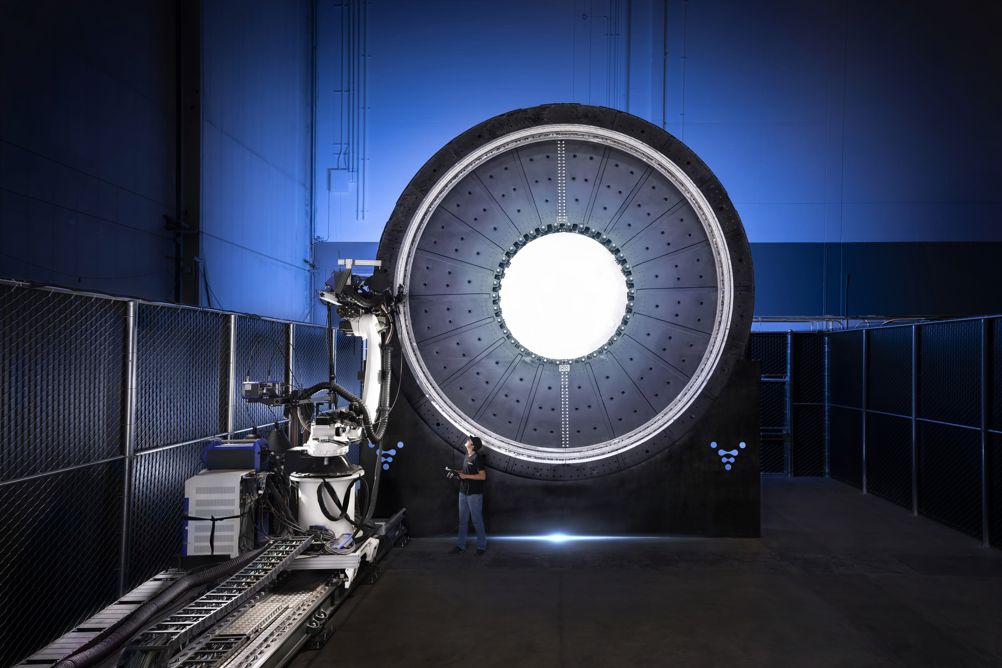Claimed to be the world’s largest metal 3D printer, the new Stargate prints horizontally and can produce objects 120 feet long and 24 feet wide, according to Relativity. The company also says the fourth generation is seven times faster than earlier iterations of Stargate.
Related content
As it moves horizontally, Stargate feeds multiple wires into a single print head, using a combination of computer vision, advanced sensors and real-time telemetry to monitor performance. According to Relativity, while the platform has been developed specifically for the rapid production of its own orbital rockets, Stargate also has wider potential across the aerospace, energy and defence sectors.
“Large-scale products that are designed to fly will inevitably be 3D printed,” said Tim Ellis, co-founder and CEO of Relativity Space. “The lighter a product is, the better it performs, and when 3D printing that product, it’s also faster and more cost-effective to produce with each successive improvement. The compounding rate of progress is high, and we are still in the early days of what printing can achieve.
“We see 3D printing as an automation technology that has the power to change the pace of innovation in manufacturing, which is why we’ve invested in building our own proprietary tech stack from day one. Stargate printers are designed to unlock rapid iteration, which opens up opportunities for innovation in large-scale manufacturing products. What would take traditional aerospace and space manufacturers years to develop and build, will be reduced down to months due to a highly adaptable, scalable, and automated process, made possible through software-driven manufacturing.”

Relativity has so far secured five customers and more than $1.2bn in customer contracts for Terran R, including a multi-launch agreement with OneWeb and a commercial mission to Mars with Impulse Space. The company’s headquarters in Long Beach - a former Boeing C-17 factory – is already home to multiple Stargate printers. Nicknamed The Wormhole, the factory will eventually house more than a dozen Stargates, each one capable of producing four Terran R rockets per year.
“Iteration empowers innovation not only in our rocket design, but also in our own Stargate printers,” said Scott Van Vliet, Relativity's SVP of Software Engineering. “In its short history, Relativity has made great strides in evolving its core 3D printing technology, but Stargate 4th Generation printers are our most innovative leap yet. We’re fundamentally changing the way our factories are designed and operating, and by flipping the script and going horizontal, we’re radically increasing our capacity for scale.”











Comment: Hydrogen requires a long-term mindset
Hydrogen does have and will have its uses. There are always "nay sayers" but these should not be confused with those raising issues that...